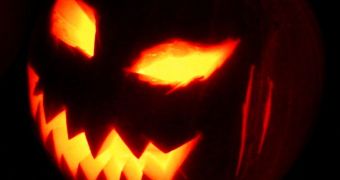As we all know, Halloween is a worldwide holiday, taking place on October 31 and linked to celebrating the spirits of the dead. Still, this is pretty much all that the celebrations have in common in the parts of the world where they are held. While Halloween was imported in most of the countries during the last part of the 20th century, the customs have been adapted or linked to local tradition, events and beliefs. Today's access to media helps the holiday and its most popular customs in being embraced by more and more nations. Still, the international symbol of the holiday remains the Jack-o'-lantern.
Halloween eve, on October 30, called Mischief Night in the US (with the Devil's Night variation in Detroit), or Miggy Night in some regions in England, is practically an opportunity to cause mayhem, from its metaphorical acceptance (throwing eggs or letting neighbors' cattle roam loose) to its literal one (setting fires, or performing actions leading to an increase in gang criminal activity). Although initially strongly linked to the Halloween event, the latter is now reserved to children’s dressing up in scary costumes and gathering treats.
The holiday is a derivation of the old British Celtic event called Samhain, which took place on their New Year's Eve, on October 31, the night when all the spirits of the dead would return to haunt people and to play tricks on them. In order to appease the spirits, townsfolk would dress in strange costumes, light fires, and place food for the dead on the porch. The Christianization of Britain during the 9th century caused Samhain to fuse with the All Souls Day and the All Saints Day traditions, which implied door-to-door treat gathering and parades. The Protestant Reformation later banned asking for treats in many parts of England.
The holiday was carried to the US by the Northern English, Irish and Scottish immigrants during the 19th century, together with the mischief pranks, which by the early ‘30s had degenerated in serious manifestations of vandalism, perhaps under the stress of an imminent war and of the Great Depression. As a response, parents began to lure their children from violent acts with candy treats, and encouraged the spooky costume wearing habit. This significantly lowered the degree to which the violent pranks were being performed, as well as the areas they took place in.
Today, this zone is limited to where Scottish and Irish immigration was higher (northeastern US or English Canada), and takes such forms as the Cabbage Night (placing rotten vegetables on porches or smashing them against windows and doors), Mat Night (a Canadian habit of replacing doormats between neighboring houses), or Gate Night (opening paddock pen and stall gates, and setting animals free). Other customs involve egging people and houses, soaping windows, smashing pumpkins, and covering trees and houses with toilet paper.
Detroit, though, is a place where gangs still perform numerous acts of violence, up to setting fire to buildings, cars or public property goods. 800 such cases were reported in 1984, forcing authorities to issue a curfew which is still in place today. This year, the city mayor will be aided by 30,000 volunteers in an attempt to prevent such manifestations.
The Jack-o'-lantern, the main symbol of the holiday, is represented by a hollow pumpkin, carved in a spooky form, and lit by a candle placed inside. The Celts thought the head was the most important part of the body, housing both the spirit and the knowledge of an individual, thus they used vegetable heads to scare off otherworldly apparitions. The name is believed to derive from the legend of Stingy Jack, a drunk and greedy Irish farmer who apparently fooled the devil into climbing up a tree where he trapped him by carving a cross on the tree bark. Then, the devil cursed him to forever roam the Earth by night accompanied only by the light he carried – a candle lit, carved turnip.
Among the more exotic countries that have been taken over by Halloween's more pleasant customs are Puerto Rico, The Netherlands, Japan, and Romania, which have slightly adapted them to local habits. For example, in Romania, Halloween is linked to the myth of Dracula and, especially in the region of Transylvania (and more specifically in the town of Sighisoara), a lot of costume parties are organized. Modern actors revive the witch trials that once took place there, and try to appease the looming spirit of Dracula.

 14 DAY TRIAL //
14 DAY TRIAL //